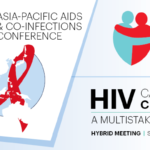Dr. Iskandar Azwa
Chairman of the Malaysian AIDS Council, Head of Infectious Diseases Department at the University of Malaya Medical Center. His research interests include pre-exposure prophylaxis (PrEP) implementation in key populations, HIV drug resistance, and evaluating new HIV treatment strategies. He is the principal investigator for several international collaborative HIV clinical trials, including TAHOD, START, and D2EFT studies.
At the APACC 2023 conference, Dr. Iskandar Azwa delivered an insightful presentation on “The Role of Nucleosides in Second-Line HIV Treatment.” Our journal had the privilege to conduct an in-depth interview with Dr. Azwa regarding the choices for second and third-line treatment for HIV/AIDS patients.
Infectious Disease Frontier: How do you view the choice of second-line treatment for HIV/AIDS patients?
Dr. Azwa: Since 2019, the World Health Organization has explicitly recommended Dolutegravir (DTG) as the preferred drug for first and second-line antiretroviral therapy and as the basis for optimizing combination therapy for patients who have failed nucleoside analogue therapy. The DAWNING study, conducted across 58 institutions in 13 countries worldwide, has demonstrated that second-line antiretroviral regimens containing DTG are superior in both efficacy and safety compared to those containing Lopinavir/Ritonavir (LPV/RTV). Currently, guidelines often recommend DTG as the first choice for second-line treatment, which is also the preferred drug in use in Malaysia.
Infectious Disease Frontier: In the real world, there is a high rate of NRTI resistance in patients who have failed first-line treatment. Do you think it’s possible to do away with NRTIs in second-line treatment, or how do you see the role of NRTIs in second-line treatment?
Dr. Azwa: The role of NRTIs remains crucial in the second and third-line treatment of HIV/AIDS patients. Despite the presence of resistance, especially to Tenofovir and Lamivudine, there is strong evidence for the continued use of NRTIs. The NADIA study has shown that even in the presence of NRTI resistance, significant antiviral activity can still be achieved when DTG-based or similar protease inhibitor Darunavir-based regimens are used. Therefore, I believe it is not yet time to abandon NRTIs. Especially from a public health perspective, the second-line regimen combining Tenofovir, Lamivudine, and DTG is more easily recommended than DTG combined with other newer drugs. Notably, the D2EFT study compared the effectiveness of the standard second-line therapy with two alternative regimens. It included 831 participants who had failed first-line treatment (composed of non-nucleoside reverse transcriptase inhibitors + two NRTIs) and randomized them into three groups: 1) Standard therapy: Darunavir/Ritonavir + two NRTIs; 2) Darunavir/Ritonavir + DTG; 3) DTG + TDF/FTC. The primary endpoint was the proportion of participants with viral load below 50 at 48 weeks. The results showed that Darunavir/Ritonavir + DTG was superior to the standard therapy in all participants, and DTG + TDF/FTC was non-inferior to standard therapy. This study also confirmed, for the first time, that Darunavir/Ritonavir + DTG is superior to the standard regimen of two NRTIs combined with Darunavir/Ritonavir. So, this is an area of research that warrants our attention, but to answer the question of whether NRTIs should be used in the second line, the answer is affirmative.
Infectious Disease Frontier: How do you approach decision-making for third-line treatment?
Dr. Azwa: In the third-line treatment of HIV/AIDS patients, utilizing the most potent drugs for resistance testing and tailoring treatment based on resistance certainly has a role. I believe that the data from the NADIA study has changed our perspective on third-line treatment regimens. For patients who have failed second-line treatment, Darunavir/Ritonavir + two NRTIs will continue to be effective. Research in this area is still relatively lacking, and we should focus more on gathering additional data.


